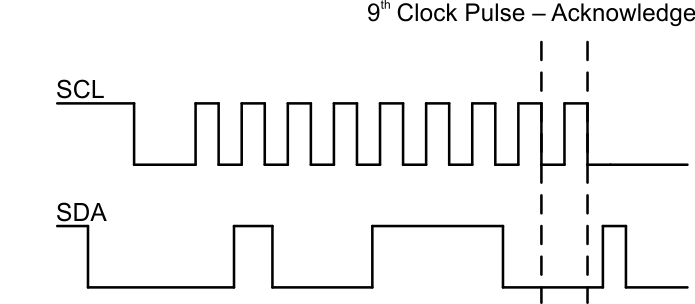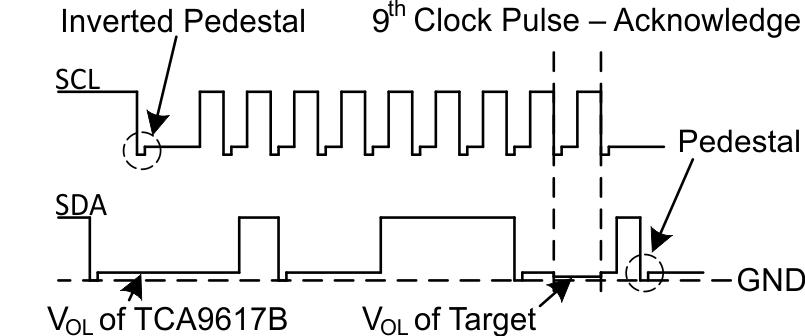SCPS259E December 2014 – October 2024 TCA9617B
PRODUCTION DATA
- 1
- 1 Features
- 2 Applications
- 3 Description
- 4 Pin Configuration and Functions
- 5 Specifications
- Parameter Measurement Information
- 6 Detailed Description
- 7 Application and Implementation
- 8 Device and Documentation Support
- 9 Revision History
- 10Mechanical, Packaging, and Orderable Information
Package Options
Mechanical Data (Package|Pins)
- DGK|8
Thermal pad, mechanical data (Package|Pins)
Orderable Information
6.3.3 High-to-Low Transition Characteristics
When the A side of the bus is driven to 30% of VCCA, the B side driver turns on. This drives the B-side to 0V for a short period (see Figure 6-2), and then the B-side rises to the static offset voltage of 0.5V (VOL of TCA9617B). This effect, called an inverted pedestal, allows the B-side to drive to logic low much faster than driving to the static offset. Driving to the static offset voltage requires that the fall time be slowed to prevent ringing.
 Figure 6-1 Bus A (0.8V to 5.5V Bus) Waveform
Figure 6-1 Bus A (0.8V to 5.5V Bus) Waveform Figure 6-2 Bus B (2.2V to 5.5V Bus) Waveform
Figure 6-2 Bus B (2.2V to 5.5V Bus) Waveform